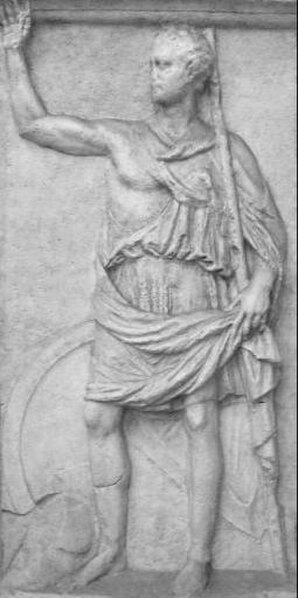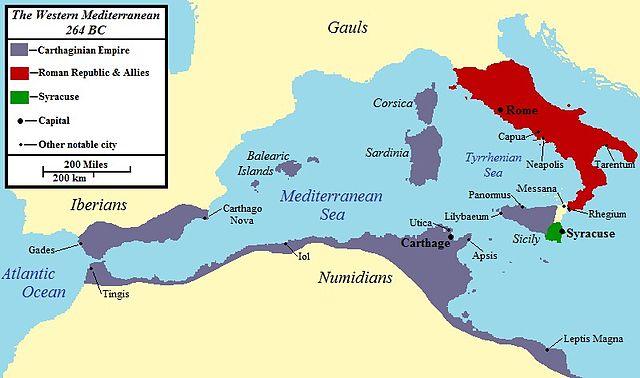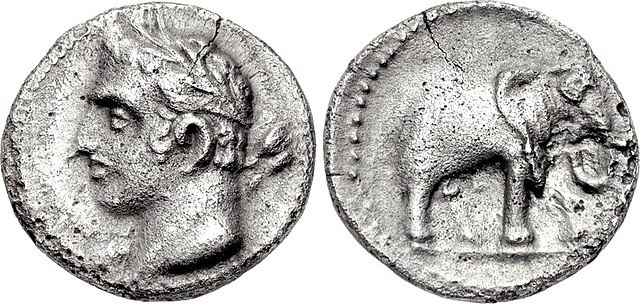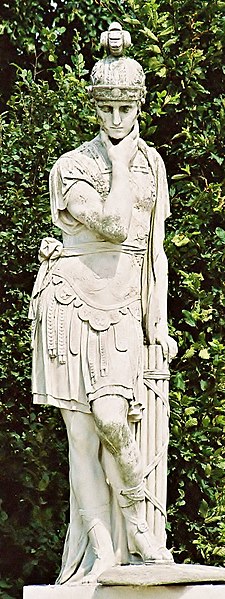Hannibal's crossing of the Alps
Hannibal's crossing of the Alps in 218 BC was one of the major events of the Second Punic War, and one of the most celebrated achievements of any military force in ancient warfare.
The Capuan bust, reputedly of Hannibal. Found in Capua
Iberian warrior from bas-relief c. 200 BC. The warrior is armed with a falcata and an oval shield. Hispanic tribes fought for both sides in the Second Punic War, but in reality most wanted to be rid of all foreign domination. National Archaeological Museum of Spain, Madrid
War elephants depicted in Hannibal's army crossing the Rhône, by Henri Motte, 1878
Carthaginian Army and the corps which made the circuit. Barbarian army compromised as the result of circuit
The Second Punic War was the second of three wars fought between Carthage and Rome, the two main powers of the western Mediterranean in the 3rd century BC. For 17 years the two states struggled for supremacy, primarily in Italy and Iberia, but also on the islands of Sicily and Sardinia and, towards the end of the war, in North Africa. After immense materiel and human losses on both sides, the Carthaginians were once again defeated. Macedonia, Syracuse and several Numidian kingdoms were drawn into the fighting, and Iberian and Gallic forces fought on both sides. There were three main military theatres during the war: Italy, where Hannibal defeated the Roman legions repeatedly, with occasional subsidiary campaigns in Sicily, Sardinia and Greece; Iberia, where Hasdrubal, a younger brother of Hannibal, defended the Carthaginian colonial cities with mixed success before moving into Italy; and Africa, where Rome finally won the war.
Polybius
The approximate extent of territory controlled by Rome and Carthage immediately before the start of the First Punic War
A Carthaginian quarter-shekel, dated 237–209 BC, depicting the Punic god Melqart, who was associated with Hercules/Heracles. On the reverse is an elephant, possibly a war elephant; these were linked with the Barcids.
A 1777 statue of Fabius








